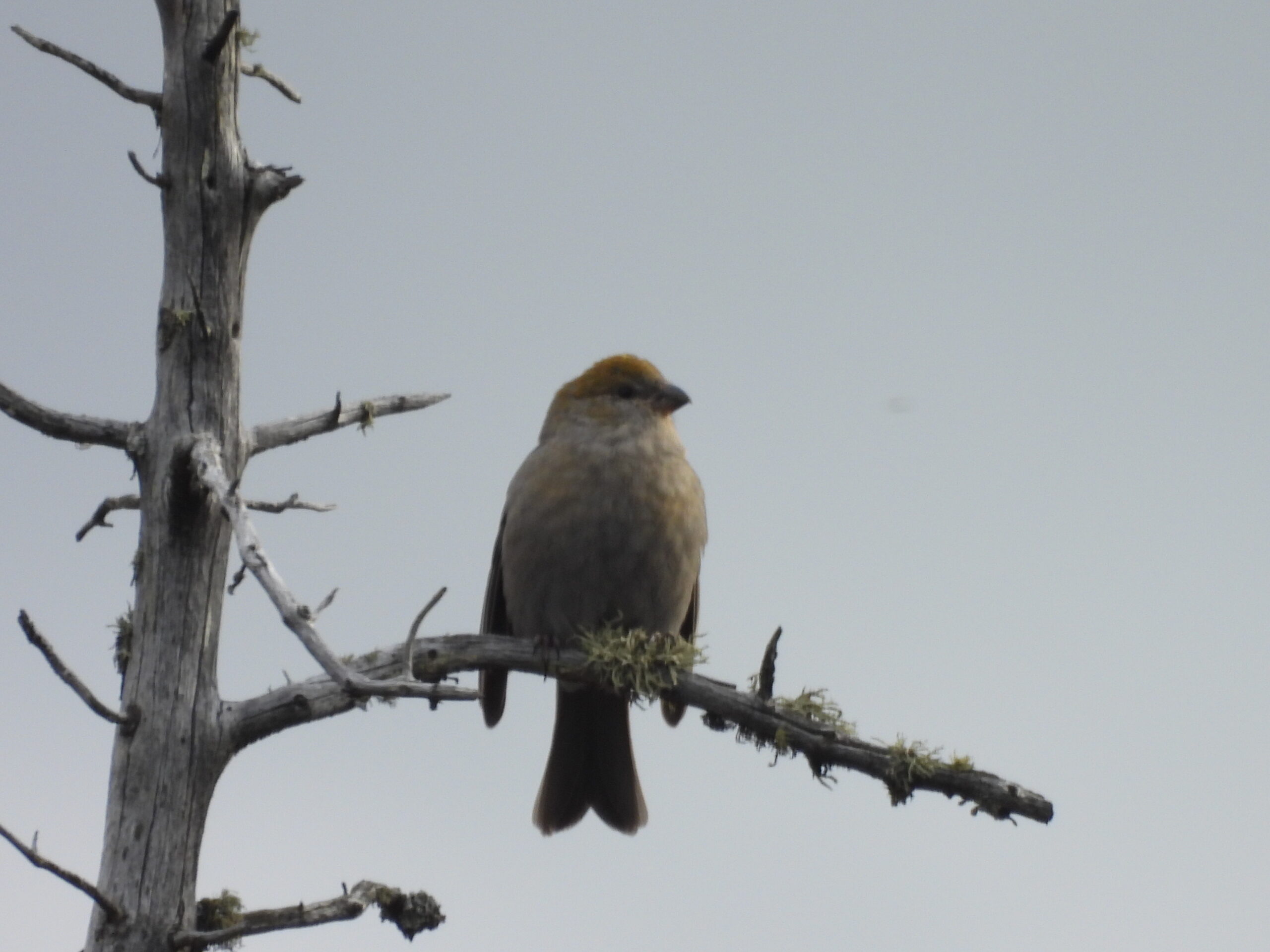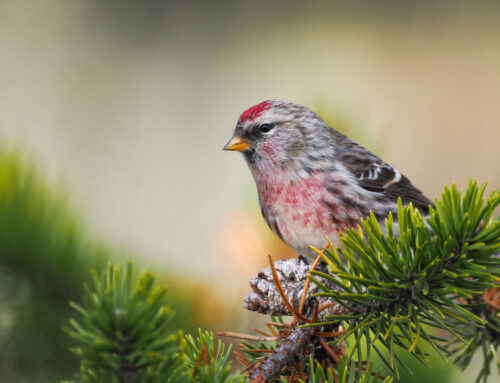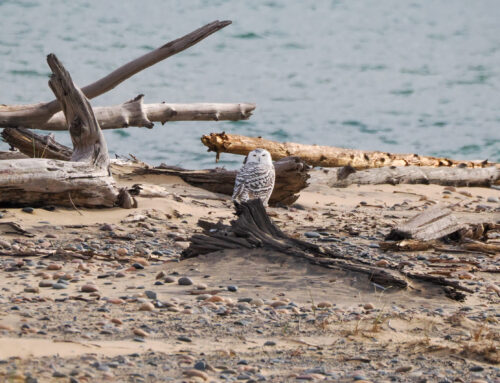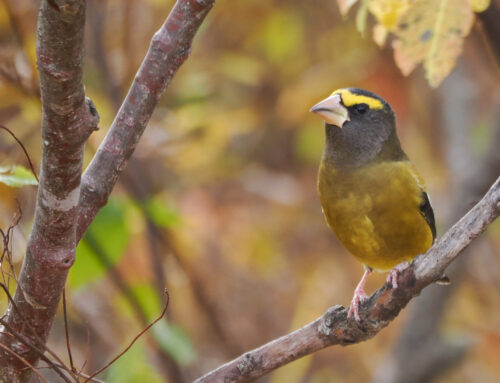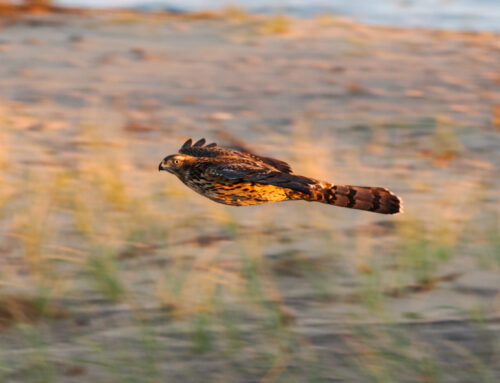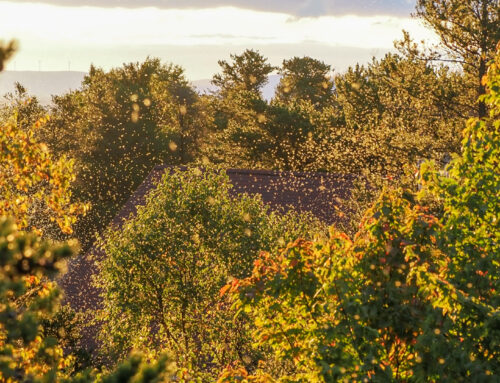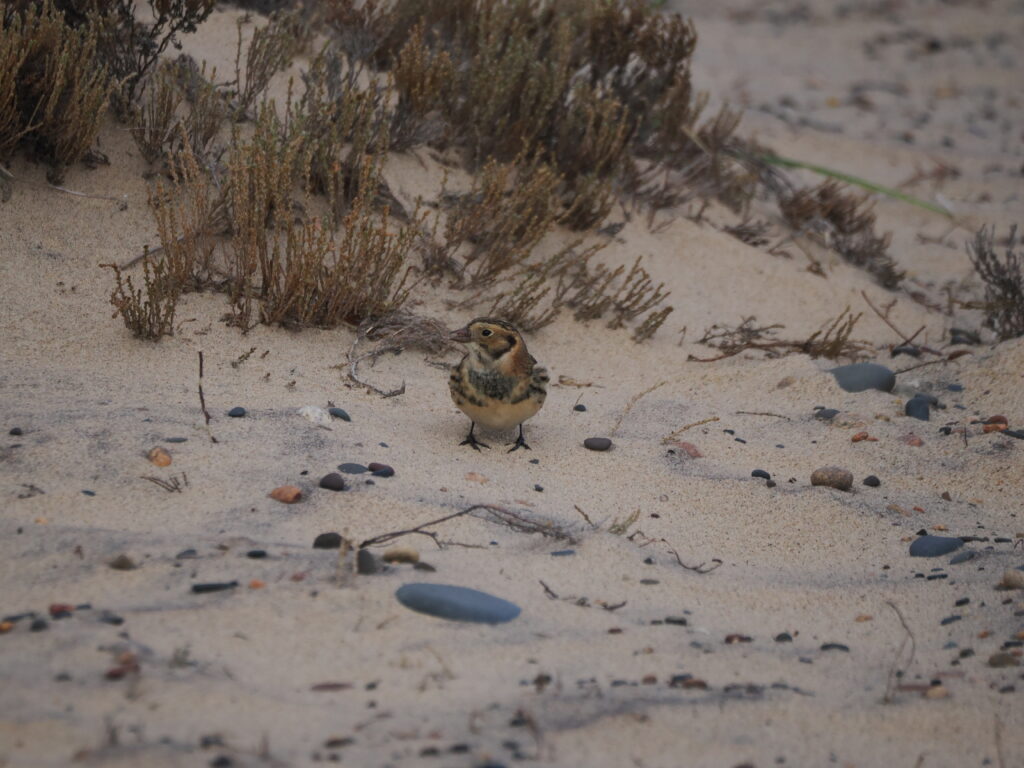
We had many flocks of longspurs come in on the 20th, and a few stopped in right at the waterbird count. Photo by Clay Bliznick.
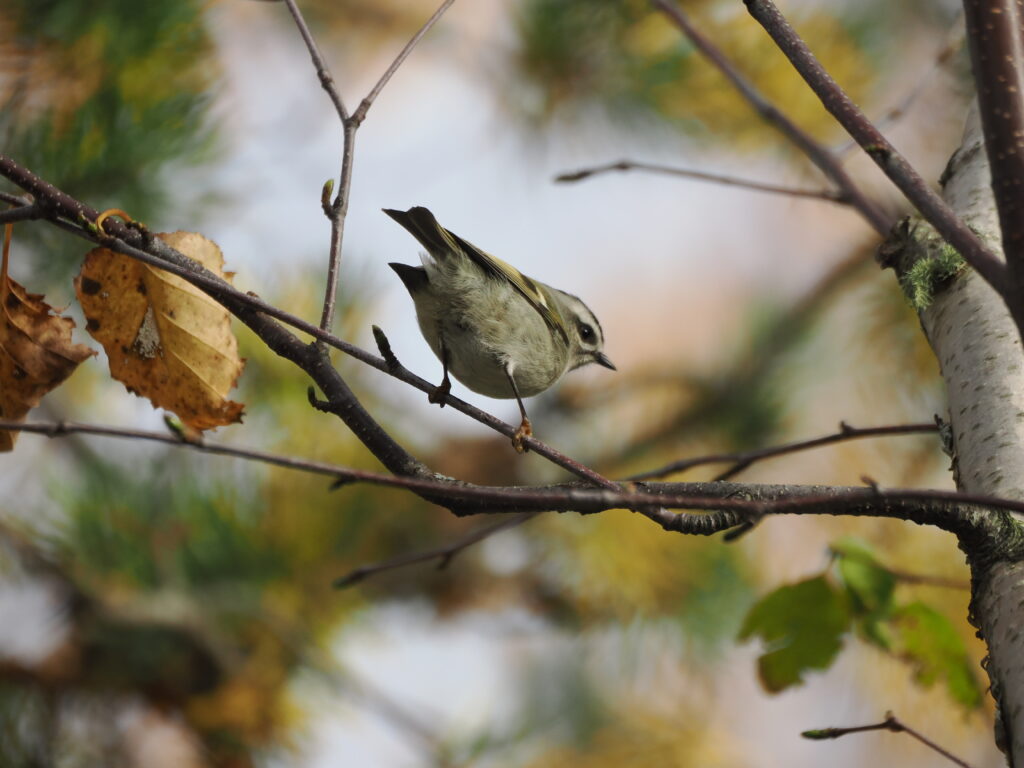
One of many, many kinglets in the woods on the afternoon of the 20th. Photo by Clay Bliznick.
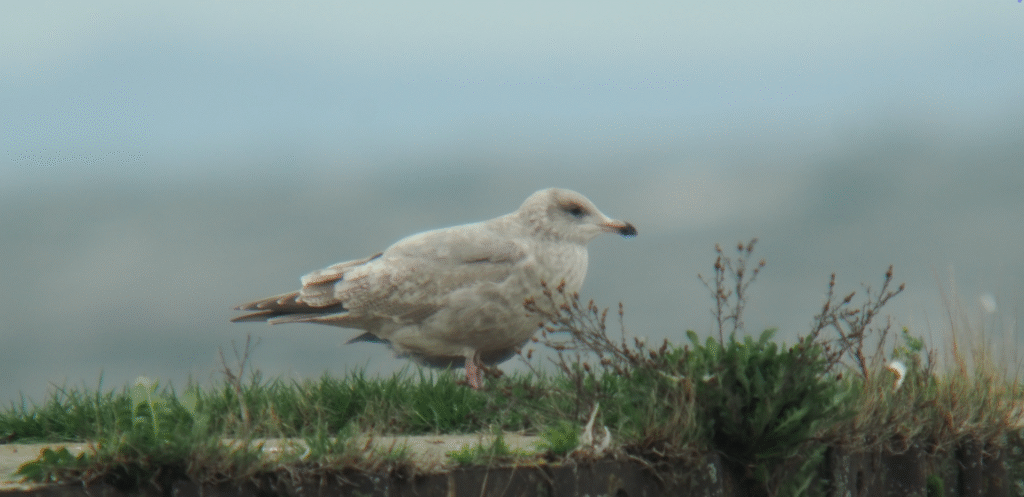
2nd cycle Thayer’s-type Iceland Gull on the harbor wall on the 19th. Photo by Clay Bliznick.
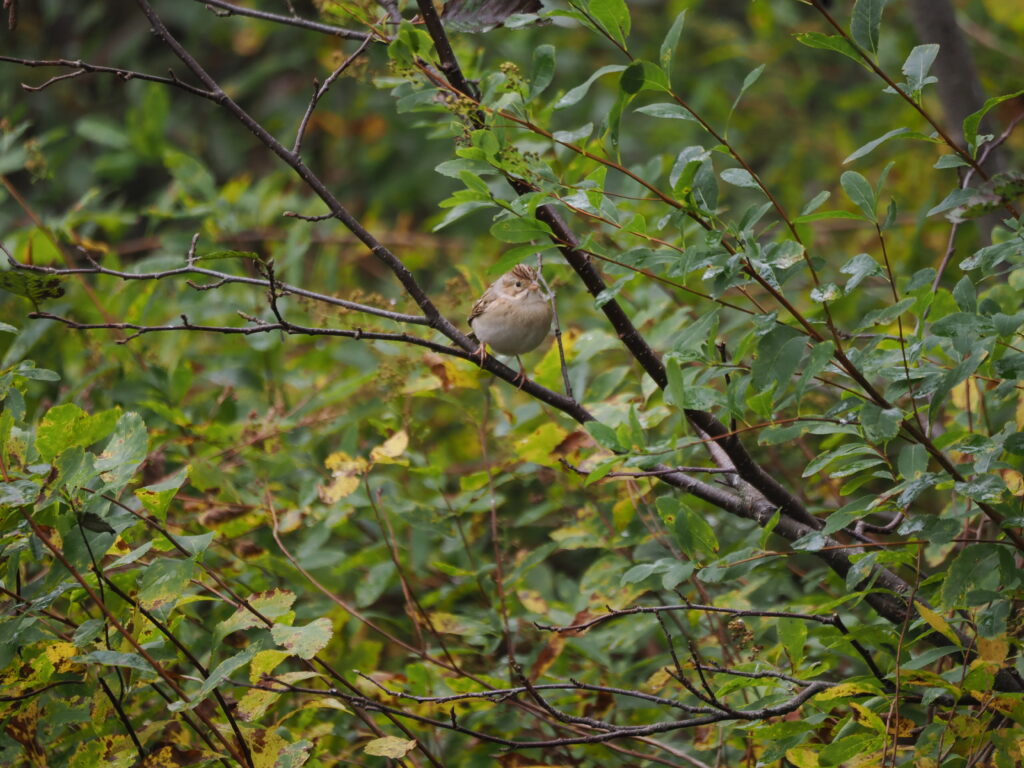
Clay-colored Sparrow right by the bird feeders on the 18th. Photo by Clay Bliznick.
The wet weather also spurred some late-season amphibian activity, with Spring Peepers and other frogs calling frequently from the bogs near the boardwalk and a few salamanders as well. Although two-thirds of the counting season is now complete, migration still hasn’t fully wound down yet. Some of the late-season species are beginning to appear, but we’re still expecting plenty of new arrivals and busy counting days to come before the fall season draws to a close.
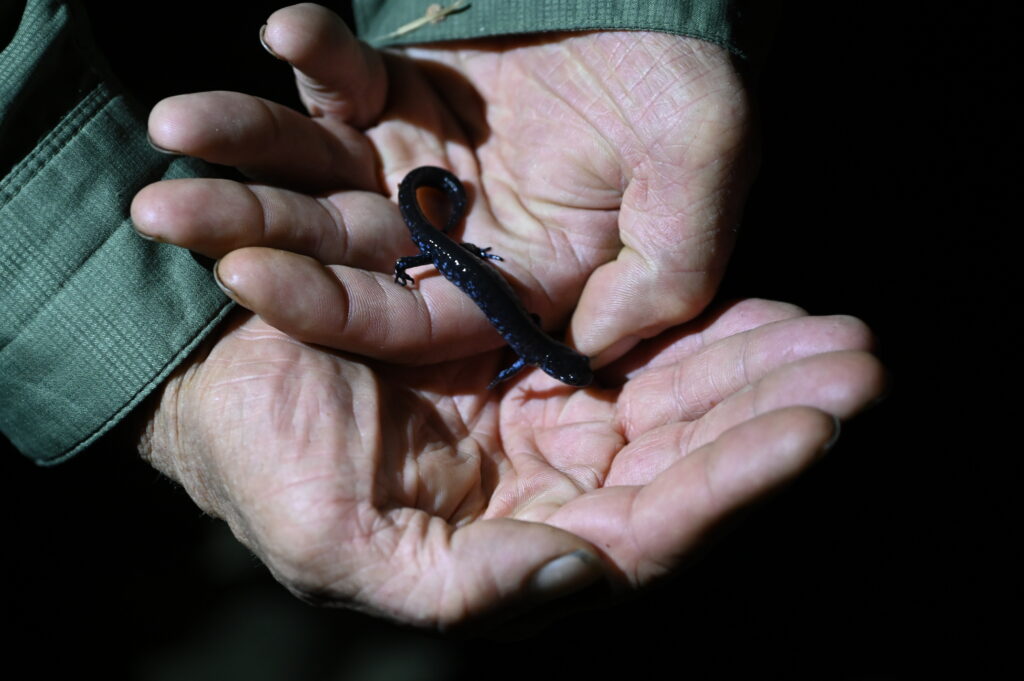
Blue-spotted Salamander. Photo by Clay Bliznick.
Track the morning flight counts on Trektellen.
Keep up with the 2025 Fall Field Ornithologist’s weekly blog posts and follow WPBO’s social media (Facebook, Instagram, and X).
Join Clay for one of his WPBO Migratory Bird Walks offered every weekend through November 15.
Learn more at wpbo.org/events.
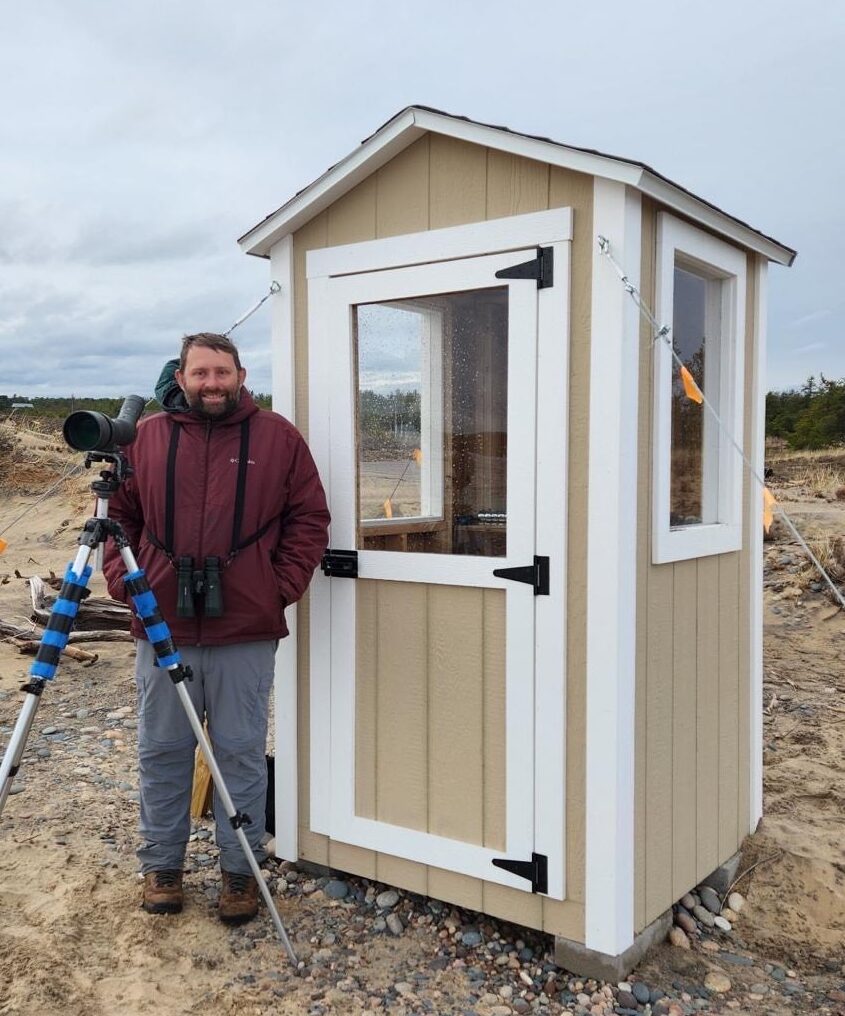
Clay Bliznick, MS: 2025 Fall Field Ornithologist
Clay worked as the WPBO fall field ornithologist in 2024 and is excited to return for the fall of 2025. He first took an interest in birds during a high school trip to Alaska, where he was struck by the flamboyance of magpies, the sleek, penguin-like appearance of alcids, and the sheer number of waterbirds residing along the coast. He dove headfirst into the world of birding while an undergraduate at the University of Kentucky, spending every free second exploring his home state for exciting new birds and places. Afterwards, he attended graduate school at Murray State University and wrote a master’s thesis examining the response of bird communities to environmental factors in Western KY bottomland hardwood forest restorations. For the last several years, Clay has traveled throughout the US working with birds in varying capacities, including nest monitoring of Florida Grasshopper Sparrows and Crested Caracaras, conducting surveys of Swallow-tailed Kite post-breeding roosts, and collecting breeding bird data in North and South Dakota for the Bird Conservancy of the Rockies.

